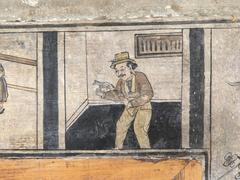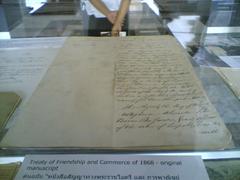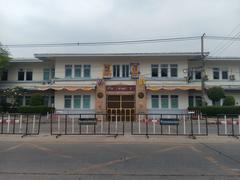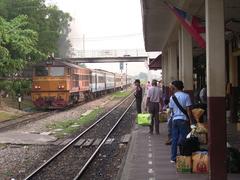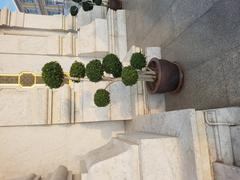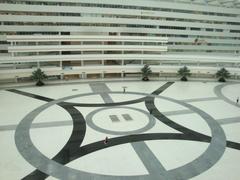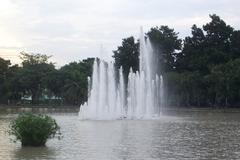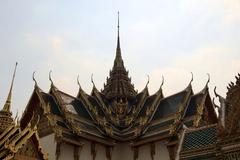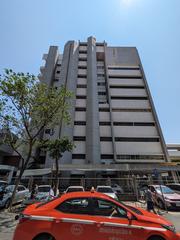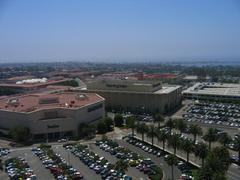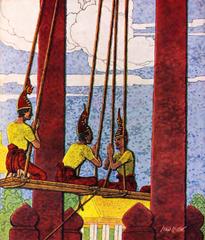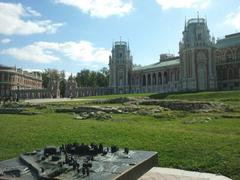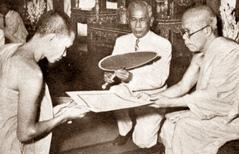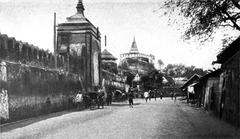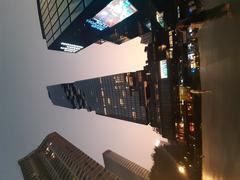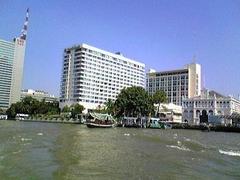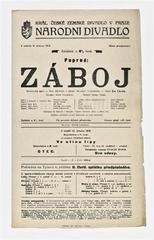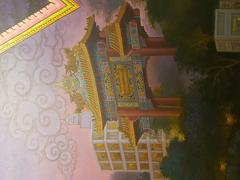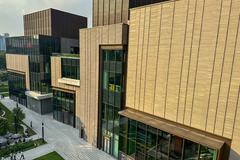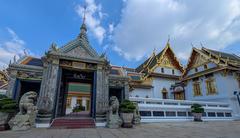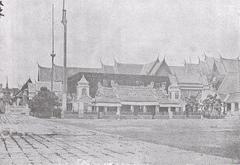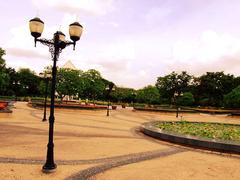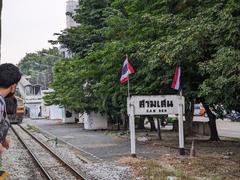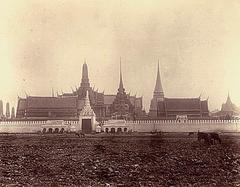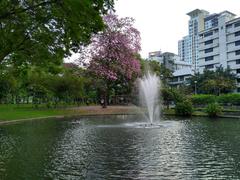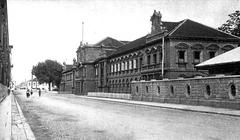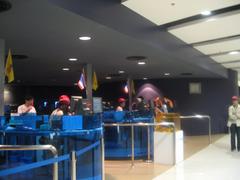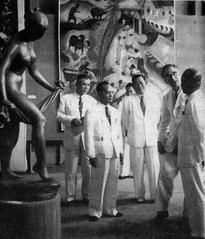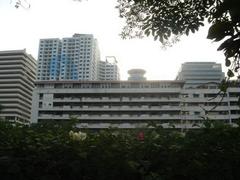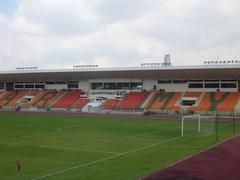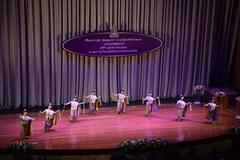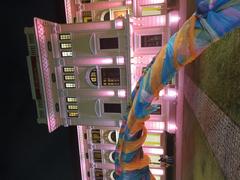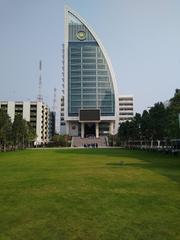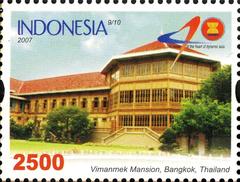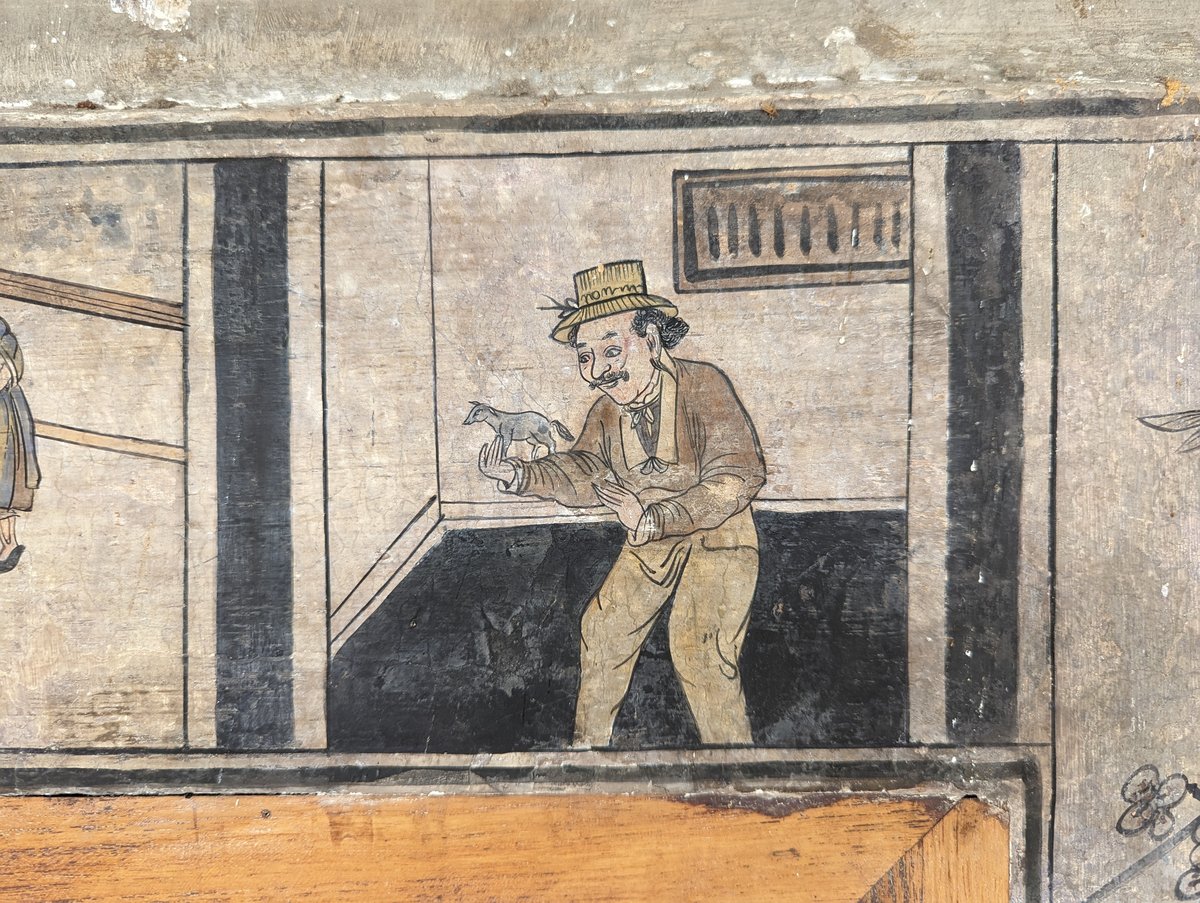
Visiting Lhong 1919 in Bangkok: History, Tips, and Visitor Information
Date: 18/07/2024
Introduction
Nestled on the banks of the Chao Phraya River in Bangkok, Lhong 1919 (ล้ง 1919) is a revitalized historical landmark that offers a unique blend of cultural heritage and contemporary charm. Originally established in 1919 by the Tan family, this riverside compound played a crucial role in Bangkok’s mercantile history. It served as a bustling trading post, connecting Thailand, then known as Siam, to global trade networks through its strategic location on the river. Over the years, Lhong 1919 evolved from a commercial hub into a self-contained community, complete with dormitories, an opera house, and a shrine dedicated to Mazu, the Taoist goddess of the sea (Discover Lhong 1919 - History, Visiting Hours, and Tickets).
In 2017, the Tan family undertook a meticulous restoration project to preserve and celebrate Lhong 1919’s historical and cultural significance. Today, the complex stands as a vibrant cultural and lifestyle destination, featuring art galleries, boutique shops, trendy cafes, and restaurants. The beautifully preserved Mazu shrine remains the heart of Lhong 1919, drawing visitors and devotees alike. This guide aims to provide a comprehensive overview of Lhong 1919, including its rich history, visitor information, travel tips, and nearby attractions, making it an essential read for anyone planning to explore this captivating site.
Table of Contents
- [Discover Lhong 1919 - History, Visiting Hours, and Tickets](#discover-lhong-1919---history-visiting-hours-and-ticketsdiscover-lhong-1919---history-visiting-hours-and-tickets)
- [The Rise of a Trading Post - A Legacy Begins](#the-rise-of-a-trading-post---a-legacy-beginsthe-rise-of-a-trading-post---a-legacy-begins)
- [A Hub of Commerce - The Lifeblood of Lhong 1919](#a-hub-of-commerce---the-lifeblood-of-lhong-1919a-hub-of-commerce---the-lifeblood-of-lhong-1919)
- [Beyond Business - A Community Takes Root](#beyond-business---a-community-takes-rootbeyond-business---a-community-takes-root)
- [The Passing of Time - From Prosperity to Tranquility](#the-passing-of-time---from-prosperity-to-tranquilitythe-passing-of-time---from-prosperity-to-tranquility)
- [A Legacy Reborn - Breathing New Life into History](#a-legacy-reborn---breathing-new-life-into-historya-legacy-reborn---breathing-new-life-into-history)
- [Lhong 1919 Today - A Bridge Between Eras](#lhong-1919-today---a-bridge-between-eraslhong-1919-today---a-bridge-between-eras)
- [Visitor Information - Tickets, Hours, and More](#visitor-information---tickets-hours-and-morevisitor-information---tickets-hours-and-more)
- [Travel Tips and Nearby Attractions](#travel-tips-and-nearby-attractionstravel-tips-and-nearby-attractions)
- [FAQ Section](#faq-sectionfaq-section)
- [Conclusion](#conclusionconclusion)
- [References](#referencesreferences)
Discover Lhong 1919 - History, Visiting Hours, and Tickets
Nestled on the banks of the Chao Phraya River, Lhong 1919 (ล้ง 1919) stands as a testament to Bangkok’s vibrant past and evolving present. More than just a revitalized riverside landmark, it offers a captivating glimpse into the city’s mercantile history and Chinese heritage. This article delves into the rich history of Lhong 1919 and provides essential visitor information including ticket prices, visiting hours, and travel tips.
The Rise of a Trading Post - A Legacy Begins
Lhong 1919’s story begins over a century ago, in the year 1919, under the reign of King Rama VI. The sprawling compound, originally known as “Hong Teck Hee,” was established by the prominent Chinese Hokkien Tan family. They had arrived in Thailand generations earlier, seeking new opportunities and contributing significantly to the nation’s burgeoning trade.
During this era, Thailand, then known as Siam, was experiencing a period of rapid economic growth, fueled by international trade. The Chao Phraya River served as a vital artery for commerce, connecting Bangkok to the world. Recognizing the strategic location, the Tan family transformed the riverfront property into a bustling trading post.
A Hub of Commerce - The Lifeblood of Lhong 1919
Lhong 1919 quickly became a hive of activity, its warehouses brimming with goods arriving from across the globe. Ships laden with exports, primarily rice, would dock at its piers, their holds exchanged for imports like Chinese silks, ceramics, and other sought-after commodities.
The compound’s strategic location and efficient operations cemented its position as a pivotal trading hub. It wasn’t merely a place of business; it was a melting pot of cultures, a vibrant tapestry woven from the interactions of Chinese merchants, Thai workers, and European traders.
Beyond Business - A Community Takes Root
As Lhong 1919 flourished, it evolved into more than just a commercial center. It became a self-contained community, housing a dormitory for workers, a Chinese opera house for entertainment, and a shrine dedicated to Mazu, the Taoist goddess of the sea, revered as a protector of seafarers.
This shrine, the centerpiece of Lhong 1919, reflects the deep-rooted beliefs of the Chinese community. It served as a spiritual anchor, offering solace and guidance to those who braved the perilous seas in pursuit of trade and prosperity.
The Passing of Time - From Prosperity to Tranquility
Over the decades, Lhong 1919 witnessed the ebb and flow of history. The decline of traditional trading practices and the rise of modern port facilities gradually diminished its role as a bustling commercial center. The once-thriving trading post transitioned into a quieter existence, its historical significance overshadowed by the passage of time.
Despite the changing tides, the Tan family retained ownership of Lhong 1919, preserving its legacy for future generations. The compound, though quieter, remained a testament to a bygone era, its timeworn structures whispering tales of a vibrant past.
A Legacy Reborn - Breathing New Life into History
In 2017, Lhong 1919 embarked on a new chapter. Recognizing its historical and cultural value, the Tan family spearheaded a meticulous restoration project. The goal was not to erase the past but to celebrate it, breathing new life into the aging structures while preserving their architectural integrity.
The revitalization of Lhong 1919 reflects a growing trend in Bangkok, where historical sites are being reimagined as cultural and lifestyle destinations. This approach not only preserves the city’s heritage but also creates engaging spaces for locals and tourists alike.
Lhong 1919 Today - A Bridge Between Eras
Today, Lhong 1919 stands as a captivating blend of old and new. The meticulously restored warehouses now house trendy cafes, restaurants, art galleries, and boutique shops. The once bustling trading floors have been transformed into event spaces, hosting everything from art exhibitions to live music performances.
The heart of Lhong 1919, however, remains the beautifully preserved Mazu shrine. Now over a century old, it continues to draw devotees and visitors alike, offering a glimpse into the spiritual traditions that have been woven into the fabric of Lhong 1919 since its inception.
Visitor Information - Tickets, Hours, and More
- Visiting Hours: Lhong 1919 is open daily from 10:00 AM to 8:00 PM.
- Tickets: Entry to Lhong 1919 is free, but certain events or exhibitions may have a fee.
- Guided Tours: Guided tours are available and can be booked in advance through their official website.
- Special Events: Lhong 1919 frequently hosts cultural events, art exhibitions, and live performances. Check their website for the latest schedule.
- Accessibility: The site is accessible to visitors with disabilities, making it a welcoming destination for all.
Travel Tips and Nearby Attractions
- Getting There: Lhong 1919 is located on the Chao Phraya River. Visitors can take a river ferry or taxi for a scenic and convenient trip.
- Nearby Attractions: While visiting Lhong 1919, explore other nearby historical sites such as Wat Arun and the Grand Palace for a comprehensive cultural experience.
- Photography Spots: The beautifully restored architecture and serene riverside setting provide excellent photography opportunities.
FAQ Section
- What are the visiting hours for Lhong 1919? Lhong 1919 is open daily from 10:00 AM to 8:00 PM.
- How much are tickets for Lhong 1919? Entry to Lhong 1919 is free, though certain events or exhibitions may require a fee.
- Is Lhong 1919 accessible for visitors with disabilities? Yes, Lhong 1919 is accessible to visitors with disabilities.
- Are guided tours available at Lhong 1919? Yes, guided tours are available and can be booked in advance through their official website.
Conclusion
Lhong 1919’s transformation is a testament to the power of heritage conservation and adaptive reuse. It serves as a bridge between Bangkok’s past and present, offering a unique perspective on the city’s evolution while providing a vibrant space for contemporary experiences. For more updates and information, follow us on social media or download our app Audiala.
References
- Discover Lhong 1919 - History, Visiting Hours, and Tickets, 2024, https://www.facebook.com/lhong1919/
- Discover Lhong 1919 - Visiting Hours, Tickets, and Top Attractions in Bangkok, 2024, https://www.facebook.com/lhong1919/
- Lhong 1919 Visiting Hours, Tickets, and Tips for a Memorable Experience in Bangkok, 2024, https://www.facebook.com/lhong1919/
